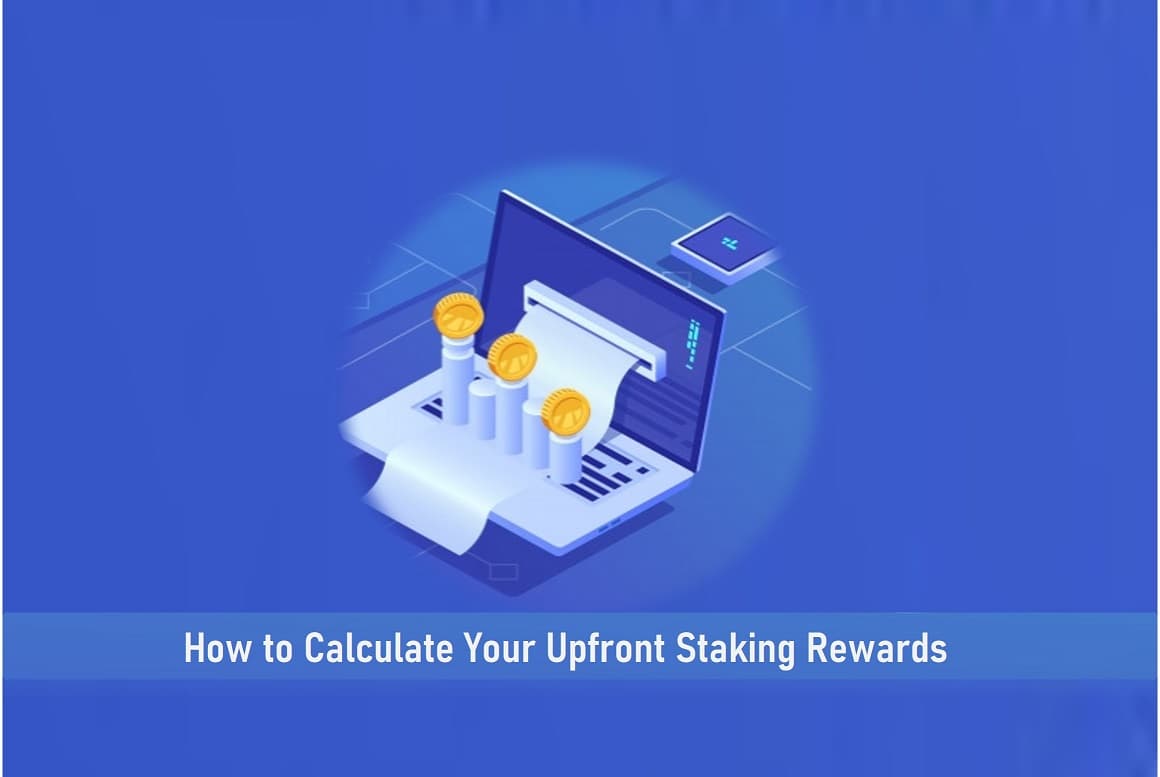
Earning Staking Rewards
Earning a “reward” is an important element in crypto staking…
Who wouldn’t want to know or learn how to project or calculate his/her cost-t0-benefit ratio before mining or staking cryptocurrency.
With interactive charts, staking gauges, rate boards, and staking calculators on staking pools, one can find out upfront what to expect when deciding to stake.

Key Takeaways
• Before staking, determine current prices and use a staking calculator to estimate rewards. Note that the total amount the individual is likely to be rewarded is easier to predict, the actual amount is determined by the type of blockchain network you intend to use.
• Unlike other complex investment ventures in the crypto industry, staking provides investors with seamless investment options that allow them to earn without actively participating in the process. In this case, whether or not an investor is active on the network, they receive rewards.
SEE ALSO: 6 Best And Profitable Crypto Staking Platforms to Consider
SEE ALSO: Top 10 Cryptocurrencies With The Fastest Blockchains In The World
Staking allows the individual to earn a passive income by holding coins. Aside from receiving a reward (in the form of additional tokens), the individual can earn more when the coin’s value rises.
However, despite the rewards that come with staking, not all cryptocurrencies permit it.
Staking rewards are calculated using a variety of parameters. If an individual is a crypto enthusiast who’s skeptical about how they can profit from crypto staking, it’s time they gave it a shot.
Staking, which is viewed as the ultimate solution to the risks associated with crypto investments gives another opportunity to crypto investors who may not have realized any profit from a crypto investment.
Staking, in addition to making sure that your crypto assets are safe and secure, ensures proficient gains when an individual decides to utilize their cryptos in staking activity.
When compared to other risky crypto activities, staking cryptocurrencies is a bit different, individuals can stake and expect gains from doing so without the usual fear of losing their coins.
Knowing the Workings of Cryptocurrency Staking
Individuals might think that crypto staking is seamless and stress-free, after all the only thing they need to do is to simply hold cryptocurrency for a given time and receive a reward but there is more to it than just holding cryptocurrencies.
To verify transactions using the Proof-of-Work mechanism, new blocks must be mined. Staking generates and verifies new blocks in the Proof-of-Stake mechanism being a validator.
This means that complex computer hardware is not required to solve difficult math problems, as is the case with staking.
Staking is all about how many coins individuals have in their possession which determines your validating powers.
The reward an individual gets is based on how many cryptocurrencies they have in their possession. A user who has in their possession huge amounts of a specific coin stands a very high chance of becoming the new block validator.
Staking not only provides support and strengthens the network, but also increases scalability.
How to Calculate Staking Rewards
Staking calculators are used to calculating staking rewards. The calculator shows the individual the amount validators are likely to receive as a result of validation done during the staking period.
Note that the total amount the individual is likely to be rewarded is easier to predict, the actual amount is determined by the type of blockchain network you intend to use.
The summary of all these is that the longer you hold, the more likely it is that you will receive more earnings on the staked assets.
How Fixed Staking Rewards Work
On most blockchain platforms, staking rewards are typically reset once a year. This implies that the reset percentages would span for one year. Because gains increase based on the given time stakeholders choose to remain on the network.
Most crypto sites utilize a fixed rate to calculate rewards. Also, interest rates are not fixed as they take up a given amount as agreed by the staking platform. For example, Coinbase offers fixed revenue flow on staking crypto. Coinbase said that individuals that own cryptocurrencies like Tezos can stake through Ledger.
SEE ALSO: 7 Best Wallets for Tezos (XTZ) Safe Storage and Staking
Can You Trade and Stake at the Same Time?
The possibility of that happening is slim as barriers are usually imposed by some blockchain networks especially when it involves fund transfers and withdrawals.
The number of factors will determine whether or not individuals are permitted to move funds.
Some of the factors are as follows:
- Transaction history
- Account history
- Banking history
Withdrawal requests may be delayed in some cases pending the unlocking of the staked funds.
Every blockchain network possesses its own rules and laws as they see fit. The individual can always talk to customer support on any chosen platform to ask for help or to rectify certain challenges especially when it comes to running their account on the network.
The following are some digital assets that can be traded on various crypto Exchanges.
Litecoin (LTC), Ethereum (ETH), Bitcoin cash (BCH), Ripple (XRP), Libra (LIBRA), Monero (XMR), and Chainlink (LINK). You can do this on Changelly.
Benefits of Crypto Staking
Unlike other complex investment ventures in the crypto industry, staking provides validators with a seamless investment option that allows them to earn without actively participating in the process.
In this case, whether or not a stakeholder is active on the network, they receive rewards.
Stakers earn in a delegated proof of stake by freezing their wallets.
The following are some additional benefits of crypto staking.
- Stakers earn by participating in DPoS
- Stakers earn rewards in the form of tokens for staking
- Lower transaction fees for trading on exchanges
Validators typically earn from holding crypto in their wallet for an extended period. The amount awarded to validators varies depending on the platform. However, the interest rates charged for holdings vary from blockchain network to blockchain network.
As a result, the amount of reward you are likely to receive is determined by the type of coin, interest rate, platform, and duration you are likely to hold your funds.
Before you begin staking, it is a good idea to use a staking calculator to predict the amount of reward you are likely to receive in each scenario. This allows you to invest with confidence rather than through trial and error.
SEE ALSO: Best 10 ERC20 Tokens On the Market
Frequently Asked Questions (FAQ)
1. What are Tezos staking rewards?
Tezos (XTZ) is a prominent cryptocurrency that secures its network via a Proof-of-Stake mechanism.
Staking Tezos lets investors earn up to 7% per year in passive income by actively engaging in transaction validation on the network.
Tezos holders who stake coins will be rewarded with XTZ tokens.
2. Do you get your coins back after staking?
With the right incentives, staking can not only return rewards but also give you input on a project’s future direction.
When staking your coins, they usually go through a lock-up period while voting; rules on this vary from project to project. After voting, you get your coins back as well as a staking reward.
3. What is the downside of staking?
Another significant disadvantage of staking is that it can become too centralized.
Taking into account that people with the higher amount of coins staked have better chances to earn the rewards for a validated block, small investors will always run from behind.
Final Thoughts
Though a staking calculator is useful for getting an estimate of how much you might get in the form of a reward in each context, the actual amount you will get in the form of a reward is determined by the blockchain platform you choose.
To choose the best option, it is necessary to conduct a thorough risk analysis in various scenarios.
Read More




